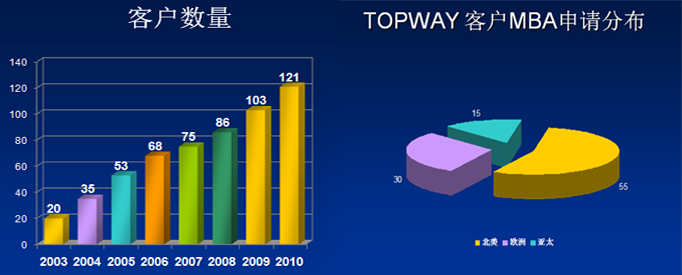|
版本一、1212小妖精
说什么耳朵的肌肉作用的好像
两段分别讨论人类耳朵的两个作用,一个是p什么,一个是保护耳朵不受到loudsound的损害,举了一个例子说小baby的耳朵里面什么听到的自己的声音还是什么声音的音量可以大到像火车的声音(这里有题 问这个例子的作用) 另外还讲到耳朵肌肉虽然属于某类别的,但是却不同,不同的理由是不受什么东西的控制(这里有题,问耳朵肌肉和其他同类别的差异)
最后一段讲到bird的耳朵肌肉的作用,也有p,但是不像人类可以抵抗loudsound,所以近距离的声音可以像engine的巨响之类(这里有题,问鸟的耳朵肌肉和人类的不同,就是不能保护耳朵抵抗loudsound)
好像有点零碎。。。唔。。。但是这篇还蛮简单的 逻辑也很明了
版本二、showdick
中耳肌肉的那道,以前的JJ比较详细了.主要就是讲中耳肌肉有两个作用:一个是对响的声音的保护,一个就是对本人说话的保护.在这里详细说一下大家有疑惑的那道题,就是提到火车和婴儿的哭声有什么用.大家知道火车的声音很响,作为中耳肌肉就能保护人耳避免被这个声音损害.而婴儿的哭声是发自婴儿本身的声音,而在本人说话时中耳肌肉也起到保护的作用.所以应该选择说明了中耳肌肉对本人说话时的保护那个选项,就是B选项.这道题的答案顺序是EEEB,绝对有把握.
考古(花花)
版本一
第一段说中耳肌肉
第二段不但是对外界大噪音而且人自己的大声说话也有反应CONTRACT
第三段不但对噪音而且帮助人分清别人的说话
第四段和鸟的中耳肌肉对比
版本2
是中耳肌肉那篇,应该做得还可以,文章很长但是都看懂了
一道问你中耳肌肉的作用,答案是阻止外部声音和在自己出声之前就收缩保护
一道问举例火车的作用,答案是描述中耳肌肉在自己大喊之前就收缩保护耳朵
版本3
记得一道细节题,问鸟的那个“中耳“和人的有和区别,原文中鸟那边有提到。还有一题问到为什么作者用"train"一词,这个是这样的,作者说婴儿的哭声在对婴儿而言就想火车一样。所以,提train应该是说中耳对控制internal voice作用,答案好几个说external的反正都错的。
1.中文与英文相关文章
中文
http://forum.chasedream.com/dispbbs.asp?boardID=22&ID=348102&page=1
英文
Two minuscule(微小的) muscles are located in the middle ear. The longer muscle, called the tensor(张肌) tympani, emerges from a bony(骨的) canal (渠河)just above the opening of the eustachian tube and runs backward then outward as it changes direction in passing over a pulleylike projection of bone. The tendon of this muscle is attached to the upper part of the handle of the malleus. When contracted, the tensor tympani tends to pull the malleus inward and thus maintains or increases the tension of the tympanic membrane. The shorter, stouter muscle, called the stapedius, arises from the back wall of the middle-ear cavity and extends forward and attaches to the neck of the head of the stapes. Its reflex contractions tend to tip the stapes backward, as if to pull it out of the oval window. Thus it selectively reduces the intensity of sounds entering the inner ear, especially those of lower frequency.
Another piece of information
There are two small muscles in the middle ear: the tensor tympani and the stapedius muscles.The former pulls the manubrium of the malleus inward, while the latter is attached to the stapes and pulls the stapes in a direction that is perpendicular to its pistonlike motion. The stapedius muscle is the smallest striated muscle in the body, and it contracts in response to an intense sound (of about 85 dB above the threshold of hearing). This is known as the acoustic middle-ear reflex. The muscle's contraction reduces sound transmission through the middle ear and thus acts as a regulator of input to the cochlea. Perhaps a more important function of the stapedius muscle is that it contracts immediately before and during a person's own vocalization, reducing the sensitivity of the speaker's ears to his or her own voice and possibly reducing the masking effect of an individual's own voice. The role of the tensor tympani muscle is less well understood, but it is thought that contraction of the tensor tympani muscle facilitates proper ventilation of the middle-ear cavity.
版本4
人的中耳的肌肉功能.1.消除高频保护耳朵.2消除低频保护耳朵3,保护头骨对自己声音的传导给耳朵的伤害.4人耳的这些功能在别的动物中也有,但还是有些不同
版本5
有题关于:
1. 中耳肌的特点: 选最后一个: 与其它肌肉不同, 不可以voluntary 控制
2. 举列火车的声音, 婴儿的哭声as loud as the sound of the train, 为了: 有两个选项区分: 为了比较effect of sound, 为了说明中耳肌的作用, 我选了后者(也不确定),
3. 中耳肌的细节题, 分得很散
总结题
1. 主题题
注意有"mid-ear muscle"的选项。
2. 提到火车的声音起何作用
有两个选项区分: 为了比较effect of sound, 为了说明中耳肌的作用, 我选了后者(也不确定),
3. 文中关于中耳肌的描述正确?
我选:中耳肌将声音从鼓膜传递到内耳
4. 中耳肌的特点:
选最后一个: 与其它肌肉不同, 不可以voluntary 控制 | 


